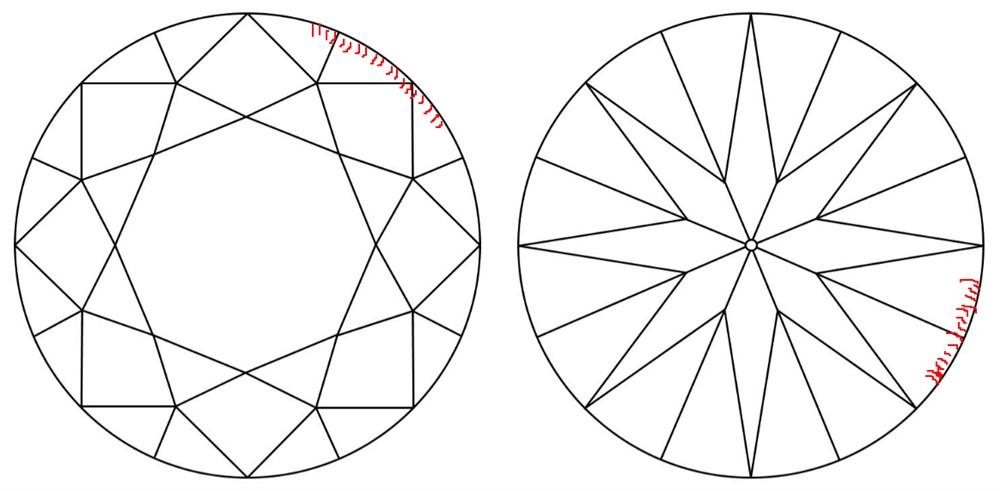Welcome to our series on diamond inclusions! Because we like to equip you with all of the possible info needed in order to make the choice that’s best for you and your sweetheart, we even have a general blog post about inclusions, which you can read here. If you’re not sure what an inclusion even is, go back and start there. If you’ve read that already and are eager for more, well you’ve come to right place! Here we will be talking about the first in our series of individual internal inclusions (those are the ones inside the stone); bearded girdles.
What is a Bearded Girdle?
So, a bearded girdle (sometimes referred to as ‘bearding’ in the comments section of a diamond grading report) is basically when the girdle of the diamond (that’s the outer most edge of the stone) appears white and fuzzy.
This white fuzziness is usually the result of a bit of a sloppy job during the cutting and polishing process itself, rather than being a naturally occurring thing (although it can also appear as the result of general wear and tear over time too). These fuzzies are basically teeny tiny ‘feathers’ that extend from the girdle around the edge of the stone inwards towards the middle of the diamond, like this:

A bearded girdle can be a point of contention in the diamond world because some argue that ‘bearding’ is a polish characteristic, while others maintain that ‘bearding’ should be counted as an inclusion. Here are Rare Carat we are going to agree with the ‘inclusion’ camp, because we feel that a bearded girdle can sometimes affect the optics of a diamond (thus impacting the clarity of the stone).
So, should you buy a diamond if it has a bearded girdle? Well, it depends. For the most part we feel that in a long list of potential clarity issues, a bearded girdle is not the most offensive characteristic. That being said, if you find a diamond that already has a ‘thick’ or ‘very thick’ girdle which also happens to have ‘bearding’, you might have optical issues.
That’s because there’s simply more surface area covered in fuzziness. And it doesn’t take a genius to figure out that the more whitish fuzzy surface area there is on a diamond, the less opportunity there is for light to bounce around inside the stone.

